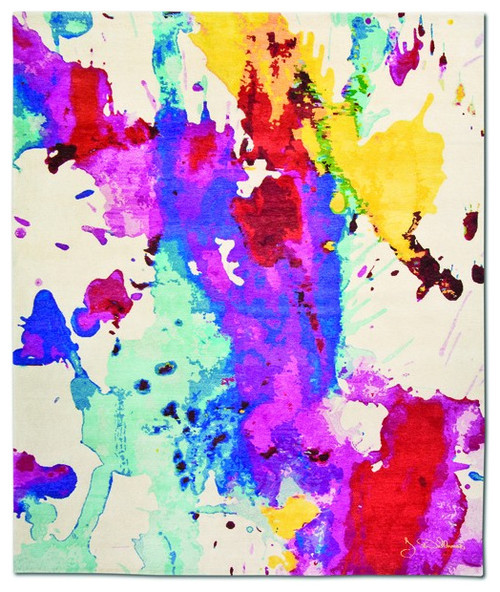Earthy Home Loves the Sun on the Coast of France
Atelier d’Architecture Bruno Erpicum & Partners (AABE) designed the warm and earthy ALON House.

Warmth exudes from the house in unlikely shades of pink concrete.

Huge blocks of bleached shell-pink concrete are softly snuggled into place in a modular pattern.

A delightful rosy-hued wood is used throughout to trim the pale pinks of the concrete.
Not the slightly darker pink chairs.

This warm tonal color story is used throughout the home.

In the kitchen this warm palette gets the surprising addition of stainless steel, with an unusual clean finished edge.
The house looks out to a cool wet sea that contrasts with the warmth and dryness of its textures and colors.
Set in a relatively isolated portion of the coast, the house has complete privacy.
The master bedroom is set right in the grassy natural garden above the cliff.
With its unlikely palette of pink concrete, glass and wood, the house exudes the wonderful warmth of these materials.

From its hillside perch, the the residence looks out over the ocean flooded with natural light.
A giant living room spans the entire length of the house.
This is a place to bask in the earthy warmth found in this enchanting space.
Design Dilemma: Painterly Rugs Are A New Trend Underfoot

There’s a trend underfoot, quite literally, for 2015. “Painterly” rugs, which look like they might have been splashed on a canvas by Monet, Pollock or Picasso, are all the rage. What does painterly look like? Take a look:
The rugs both above and below are Marc Phillips gems. The reason they look like paintings is that they were actually created by painters. The Marc Phillips Artistry Edition rugs, for example, were created by Jo-Anne Preston, a painter, calligrapher and carpet designer holding a B.A. and an M.A. in Fine Arts and Art History. Marc Phillips regularly collaborates with well-known artists such as Shepard Fairey, RETNA and Jamie Bush. The rug below is Splash Supreme 3 in wool and silk in All Natural.
Along the same painterly lines are Christopher Wool’s New Linen 8 hand-knotted rug in silk which resembles a charcoal drawing or a print rather than a rug:

And below, another rug by This Moment is abstract and deliciously vivid. It’s hand-knotted of Tibetan wool and Chinese silk by artist Amy Helfand.
Finally, there’s the River Basin hand-knotted rug in silk by Organic Looms.
Are you attracted by the loose, free-wheeling brush-stroke feeling of many of these rugs? How can you make them work in your own home?
- Let the rug be the focal point. When you’ve got a beautifully vivid rug, there’s no point in piling on too many other patterns in other textiles in the room. Let the rug hold all the attention by keeping curtains, upholstery and pillows in solid colors that complement the rug.
- If you do add pattern in other textiles, vary the scale. If you have a rug with a very wide and loose pattern, choose pillows and upholstery that are smaller in scale.
- Feel free to pare down. Maybe you can get away with a little less furniture, just so you can better behold the beauty of your rug.
- Keep your artwork in mind. Your rug should complement your artwork, not fight with it.
The Kimono Dyer’s House
Fumihiko Sano studio PHENOMENON has come up with an innovative solution for their client, a woman who needs space to dye kimonos, and she wanted a sense of security for her suburban Tokyo live/work home.

So the architects designed a house within a house.
It has a stainless steel mesh wrapped over a steel framework that surrounds the house at the perimeter of the lot.
The steel is as light as air and shimmers as the wind causes it to billow in and out.
The shape of this barricade of exterior framing of the airspace around and over and above the house can be better seen at night.
Within this improbable enclosure the Kimono Dyer makes her cozy home.
The main floor houses the spacious studio workroom where she dyes the kimonos.
Next to this workspace is the kitchen.
Upstairs, on the second floor, there is the Tatami room, and the bathroom.
In traditional-style Japanese homes a Tatami room is used for sleeping or meditating. The tatami mat is rolled up and placed under the raised floor when not in use. But in this house, there are three bedrooms in addition to this Tatami room meditating space.

But all around the house there is this shimmering view… a very unique home.
















